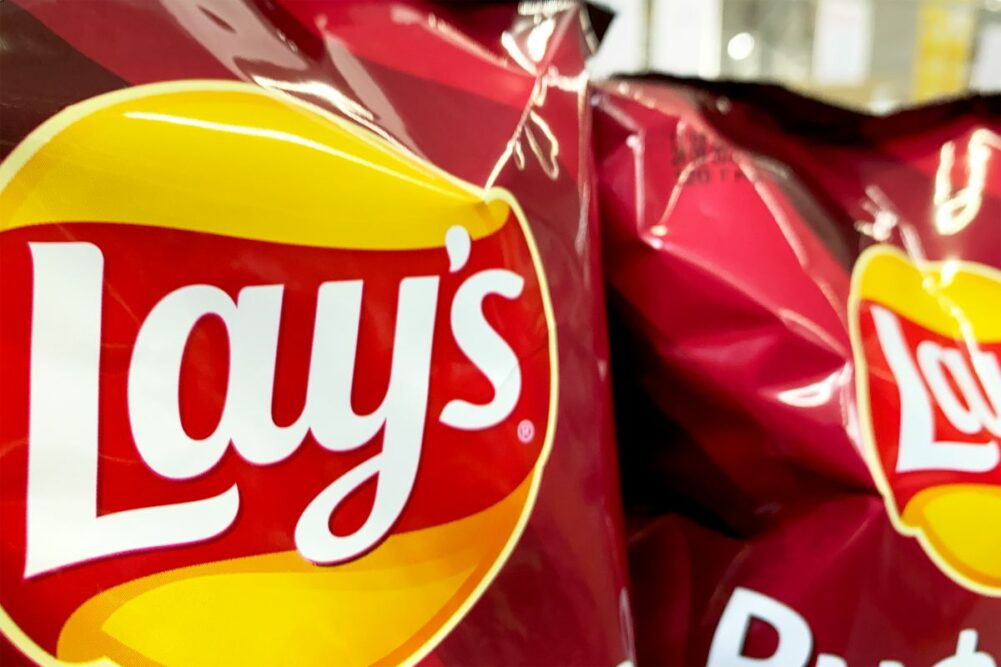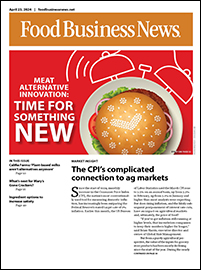PURCHASE, NY. — As salty snack sales have slowed in North America, PepsiCo, Inc. is making tactical changes in its Frito-Lay North America (FLNA) business to improve performance and shifting its focus to producing healthier options to recapture consumers who may have left the category in search of products perceived as healthier.
“In snacks, after five years of very fast growth and gaining almost 200 (basis points) of share, '24 has been a slowdown,” said Ramon Laguarta, chairman of the board and chief executive officer, during a Feb. 4 conference call with analysts to discuss first-quarter results. “Our No. 1 priority this year has been stabilizing the category, making sure that consumers come back to the category with good ROI (return on investment).”
Laguarta said value is the consumers’ No. 1 “decision maker” and the main reason why the salty snack category has slowed in the past 12 months. Tactically, FLNA is investing in price-pack architecture around single- and multi-packs to offer consumers more value options.
“… We're going to have much more surgical offerings to consumers, especially around price partitions,” he said. “I think we can do pricing, sizing in a way that we give consumers optionality without diluting the pricing of our business or the category.”
But Laguarta also said consumer interest in health and wellness is playing a role in the salty snack slowdown.
“I think there is more awareness from consumers to the food and the drinks that they consume,” he said. “I think there … has been a multi-year evolution of the consumer in the US (and) globally, as well.”
He added that through social media monitoring PepsiCo has seen consumer behaviors toward being more health-conscious shift and that the trend may be accelerating in the United States. To respond, PepsiCo will emphasize portion control, the low sodium and fat content of some of its products, and the elimination of artificial ingredients from formulations. The company also plans to emphasize the better-for-you aspects of its products, specifically whole grain, legume and protein content.
In the year ahead the company will relaunch its Simply line and emphasize that the products have no artificial colors or flavors. The company also is planning to leverage the potential of the recently acquired Siete and Sabra brands.
One specific area of innovation focus will be mini meals, which Laguarta said are becoming more relevant to consumers.
“… This is not only a value-driven decision, but it’s a sequence — it’s been also a multiyear evolution of the category where more occasions more calories are being eaten in small meals versus large meals,” he said. “And I think that is something that will continue as (the) consumers’ lifestyle evolves…
“So, that will be big in ‘25, and we’re pivoting a lot of our A&M (advertising and marketing) into those spaces.”
An analyst participating in the conference call asked about how the rising use of GLP-1 medications for weight loss may be impacting the salty snack category, particularly in the wake of a study showing consumers on the drugs reduced spending on snacks.
“… We continue to study GLP, obviously, with a lot of detail,” Laguarta said. “And at this point, we see that because of the lower levels of adoption and people coming in and out of the treatment, we see very little impact in our business and in our category at this point.”
PepsiCo also is looking to innovate around protein beverages, which Laugarta said is growing faster than the total liquid refreshment beverage category.
“… We’re trying to participate in that (protein beverages) with a sense of urgency,” he said.
James Caulfield, chief financial officer at PepsiCo, added that the company offers several high protein products through its Quaker North America business.
“I think there’s a lot more opportunity to expand that,” he said.
Laguarta added, “We haven’t seen a direct impact of GLP, but we’re seeing more conversation in social media about health and wellness in general and obviously, that’s impacting consumption of food and consumption of beverages, and we’re very well positioned with our broad portfolio to cater to all these new realities.
“And this is not new. This is something that we’ve been working on for many years. This is a sequential evolution of the consumer that both through innovation and through M&A, we've been addressing…”



